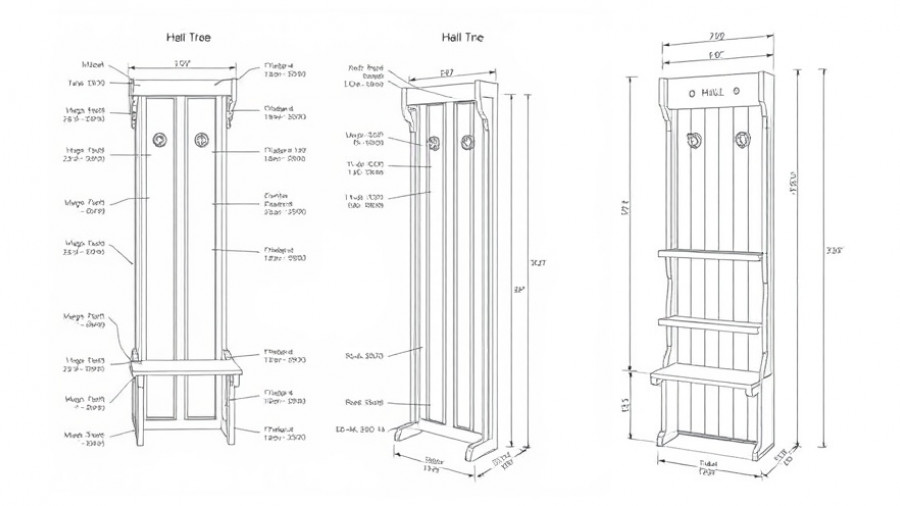
Winter Garage Storage: What to Avoid
As the winter chills creep in, many homeowners unconsciously turn their garages into a catch-all space. However, as much as the garage provides a haven from winter rains and snow, it can also turn into a hazardous zone for certain items. Understanding what not to store in your garage during the winter is critical to preserving your belongings and ensuring safety.
Why Your Garage is Not Ideal for Certain Items
Experts advise treating your garage like an unheated shed. Items that are adversely affected by cold temperatures or fluctuating humidity levels shouldn't find a home here. As home inspector Ruben Saltzman aptly puts it, “If you wouldn’t leave it outside in January, don’t leave it in your garage either.” This rule of thumb is a vital guideline as it pertains to items that can deteriorate or even create safety hazards.
Top Items to Keep Out of Your Garage This Winter
1. **Propane Tanks**: A fundamental rule when it comes to storage safety is to keep propane tanks outdoors. Storing them in an enclosed space could lead to gas leaks due to the fluctuating temperatures that could trigger ignition. Always store them in an upright position, away from sources of heat.
2. **Gasoline and Diesel Fuel**: As winter temperatures fluctuate, gasoline stored in plastic containers might rupture, releasing hazardous fumes. Additionally, some gas can absorb moisture, leading it to go stale. Remove gas from all your power tools before putting them into storage.
3. **Paint & Solvents**: Cold temperatures can alter the chemical makeup of paints and solvents, rendering them unusable. Water-based paints, in particular, can freeze and separate. Instead, find a warm storage spot like a basement for these items.
4. **Cleaning Chemicals and Pesticides**: These can degrade, leak, or even become fire hazards in the inconsistent temperatures of a garage. Store them in a cool, dry, and ventilated area to prevent dangerous consequences.
The Hidden Dangers of Ignoring Winter Storage Guidelines
Neglecting proper winter storage can lead to accidents, health risks, and financial burdens. For instance, oily rags may produce heat which can lead to spontaneous combustion when piled together. Proper disposal of oily rags — do not leave them bunched up in the garage — is crucial to preventing accidents. Being proactive during winter preparations can save you stress and financial ramifications down the line.
Alternative Storage Solutions for Winter
Instead of overloading your garage, consider these alternatives for storing sensitive items:
1. **Climate-Controlled Storage Units**: For items requiring tighter temperature and humidity control — like electronics, antiques, and furniture — renting a climate-controlled storage unit can extend the life of your belongings.
2. **Inside Your Home**: If you have spare space in your laundry room, basement, or closet, utilize these areas. Clean and well-organized spaces are excellent for long-term storage while ensuring safety.
3. **Elevating Items**: If you must store items in the garage, be sure to elevate them on shelves or pallets to prevent moisture damage from potential flooding.
Regular Checks: Maintaining Your Storage Environment
During the winter months, it’s wise to perform regular inspections of your stored items. This practice helps identify potential issues like pests or moisture damage, ensuring that everything remains in good condition. A little diligence can go a long way in safeguarding your possessions.
Conclusion: Store Wisely to Stay Safe
Ultimately, maintaining your home’s safety is paramount, especially in the winter months. By understanding what to avoid in your garage and leveraging alternative storage solutions, you can ensure your belongings and your home stay safe throughout the season. Embrace these tips to keep your space organized and your items secure!
 Add Row
Add Row  Add
Add 




Write A Comment